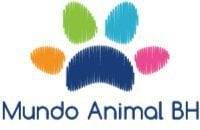Cobra Rei no Treinamento | @squadkingcobrachannel3920 | Biólogo Henrique o Biólogo das Cobras
17 de abril de 2024“@squadkingcobrachannel3920 This channel is Educated, about reptiles (snake).
#venom #snake #animals
#reptile”
#Cobra #BiólogoHenrique #Snake
The king cobra (Ophiophagus hannah) is a large elapid endemic to forests from India through Southeast Asia. It is the world’s longest venomous snake. Adult king cobras are 3.18 to 4 m (10.4 to 13.1 ft) long on average. The longest known individual measured 5.85 m (19.2 ft).[3] It is the sole member of the genus Ophiophagus. It preys chiefly on other snakes and occasionally on some other vertebrates, such as lizards and rodents. It is a highly venomous and dangerous snake when agitated or provoked that has a fearsome reputation in its range, although it is typically shy and avoids confrontation with humans when possible.
The king cobra is a prominent symbol in the mythology and folk traditions of India, Sri Lanka and Myanmar. It is the national reptile of India.[8] It is threatened by habitat destruction and has been listed as Vulnerable on the IUCN Red List since 2010
Hamadryas hannah was the scientific name used by Danish naturalist Theodore Edward Cantor in 1836 who described four king cobra specimens, three captured in the Sundarbans and one in the vicinity of Kolkata. Naja bungarus was proposed by Hermann Schlegel in 1837 who described a king cobra zoological specimen from Java. In 1838, Cantor proposed the name Hamadryas ophiophagus for the king cobra and explained that it has dental features intermediate between the genera Naja and Bungarus.Naia vittata proposed by Walter Elliot in 1840 was a king cobra caught offshore near Chennai that was floating in a basket. Hamadryas elaps proposed by Albert Günther in 1858 were king cobra specimens from the Philippines and Borneo. Günther considered both N. bungarus and N. vittata a variety of H. elaps.[13] The genus Ophiophagus was proposed by Günther in 1864. The name is derived from its propensity to eat snakes.
Naja ingens proposed by Alexander Willem Michiel van Hasselt in 1882 was a king cobra captured near Tebing Tinggi in northern Sumatra.
Ophiophagus hannah was accepted as the valid name for the king cobra by Charles Mitchill Bogert in 1945 who argued that it differs significantly from Naja species. A genetic analysis using cytochrome b,[18] and a multigene analysis showed that the king cobra was an early offshoot of a genetic lineage giving rise to the mambas, rather than the Naja cobras.
A phylogenetic analysis of mitochondrial DNA showed that specimens from Surattani and Nakhon Si Thammarat Provinces in southern Thailand form a deeply divergent clade from those from northern Thailand, which grouped with specimens from Myanmar and Guangdong in southern China.
fonte : wikipedia

não senhor Henrique nunca será kkkk
pezinho pra frente e pezinho pra trás nunca kķķlķkķķ
Esses caras são muito bons
Acho q eles cortam dentes da cobra pra não morder daí eles fazem isso..
1 milhão kkk bom dinheiro 💵 .mas tô longe. 🐍